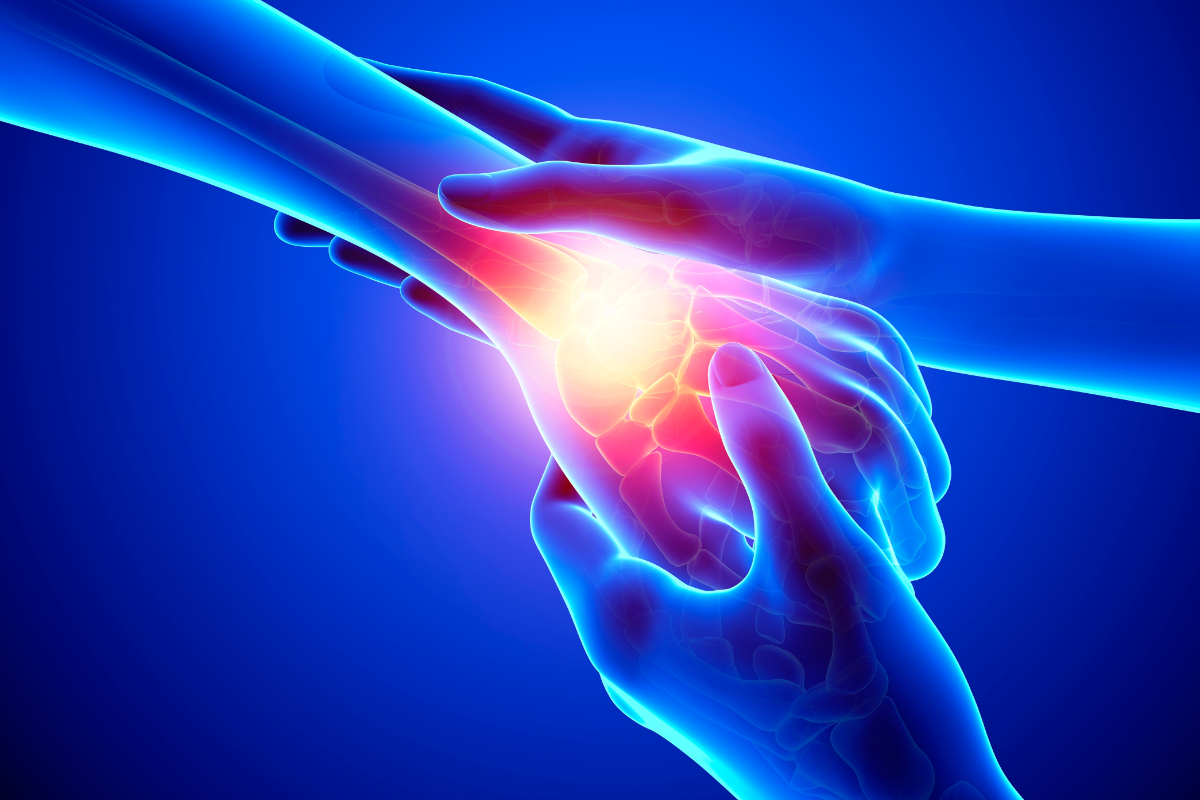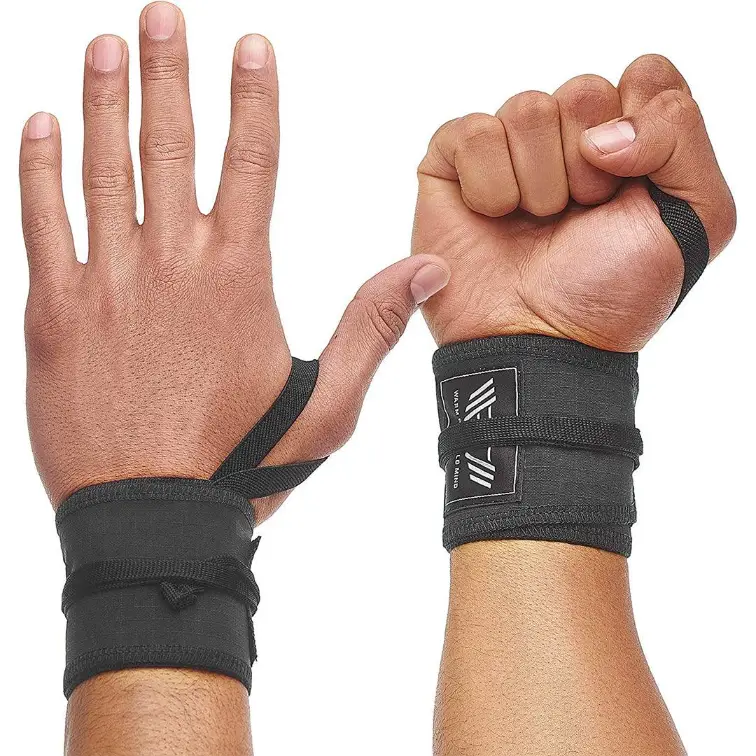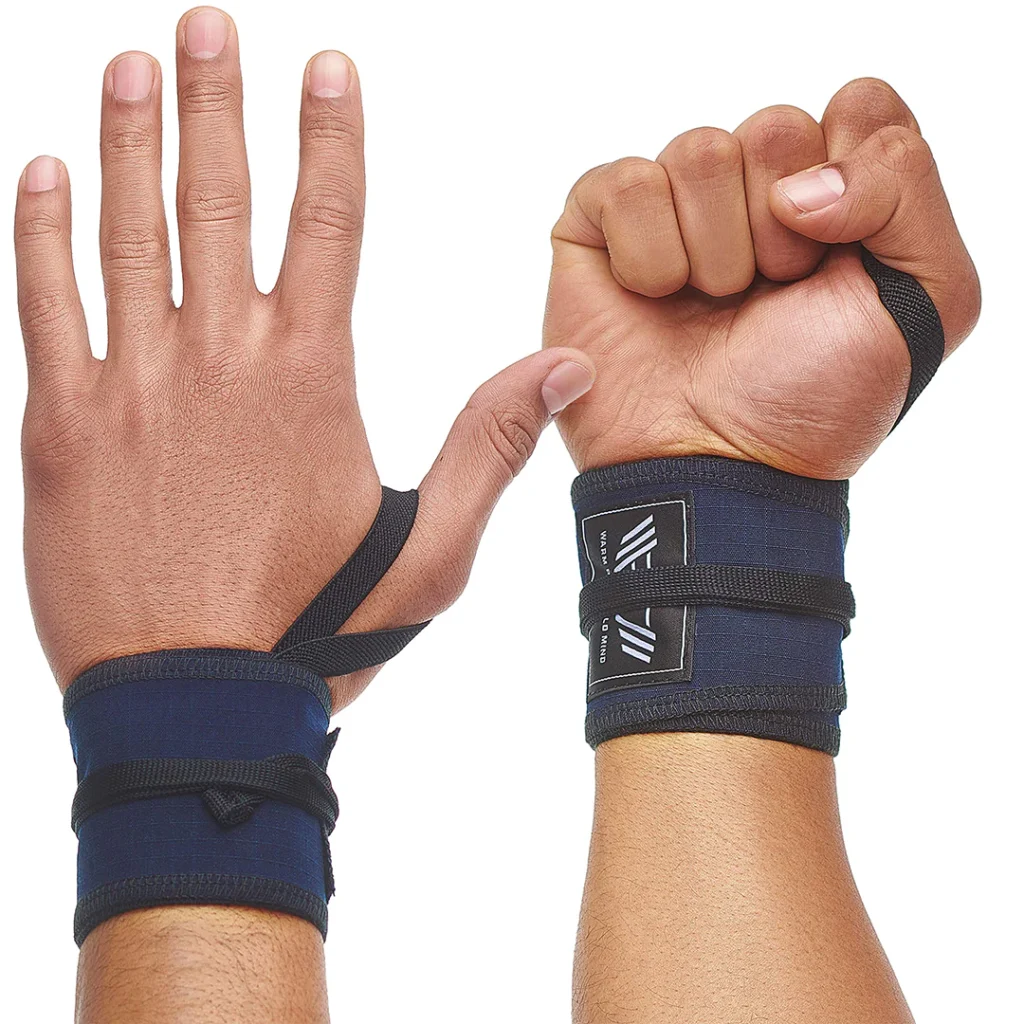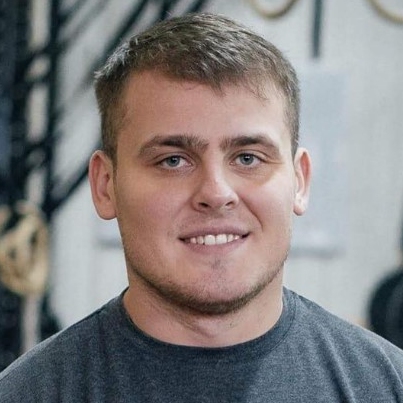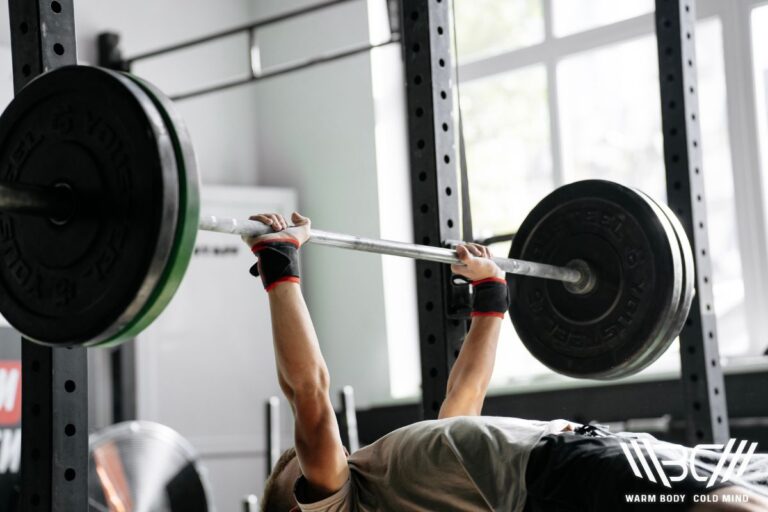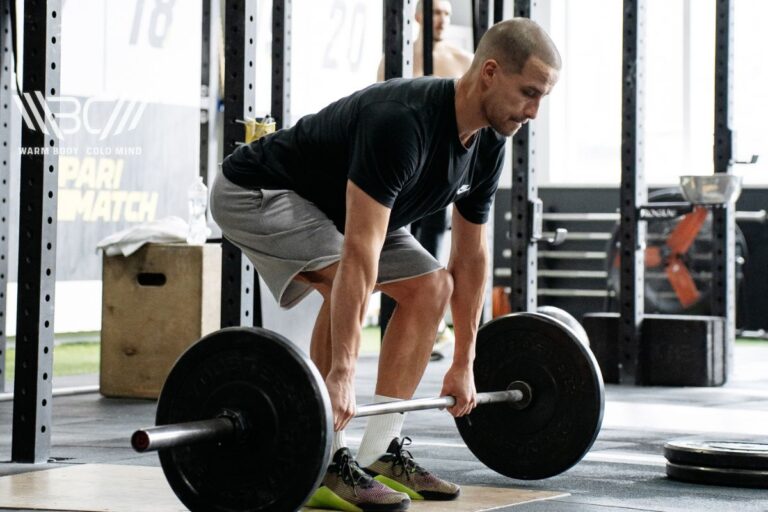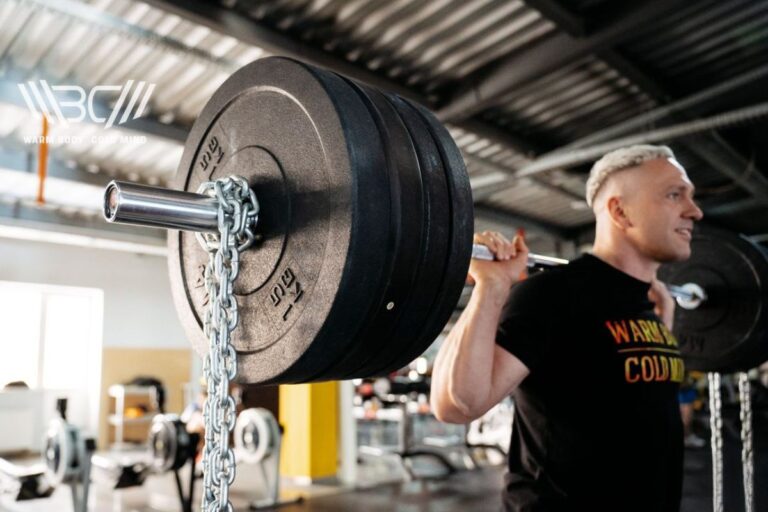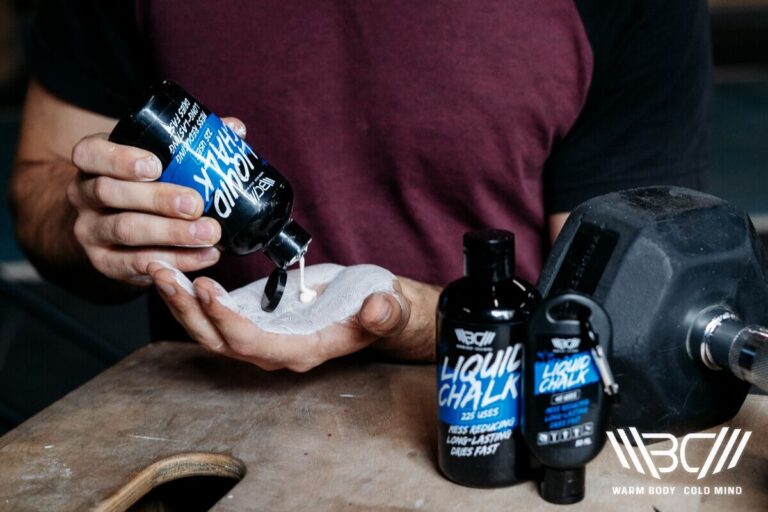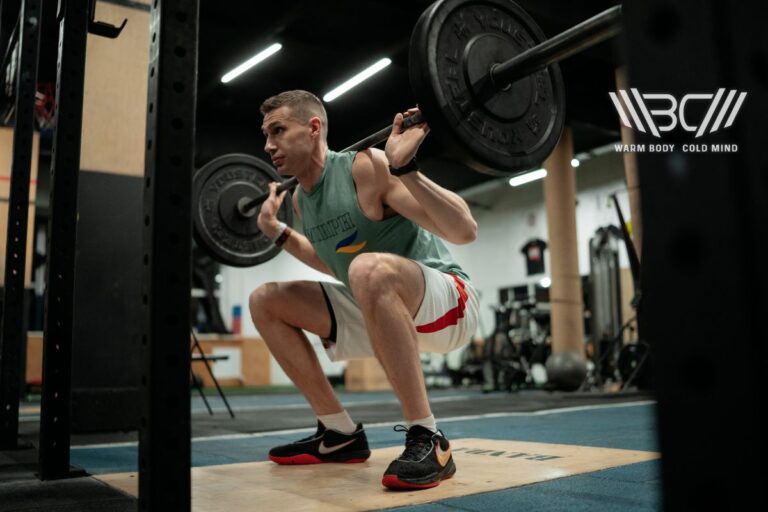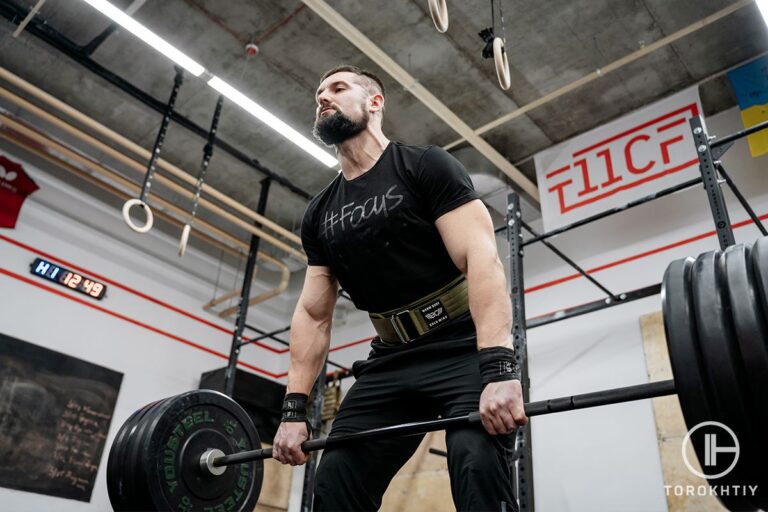Wrist Pain From Lifting Weight: Reasons And Concerns
Reviewed by Oleksiy Torokhtiy
MEDICAL WARNING: This article is for informational purposes only and is not intended to be a substitute for professional medical advice. If you experience any health problems while exercising or using supplements, consult your doctor.
If you encountered wrist pain from lifting weights in one of your recent workouts, you’re likely wondering what it might be. Feeling wrist pain when working out is not an immediate cause for alarm but it could be a symptom of something bigger, such as an underlying injury.
Wrist Pain From Lifting – Wrist pain from lifting weights is not an immediate cause for alarm, but it shouldn’t be ignored. Pain is our body’s request for a change. If your wrists hurt when lifting, it could be a sign of injury or conditions that require medical treatment.
So, how do we know if our wrist pain from gym day is cause for concern or a simple inconvenience? To answer that question, let’s look at some common types of pain and possible reasons that can cause it. Now, who’s ready for a quick anatomy course?
Why Does Your Wrist Hurt During Lifting?
The human hand is structurally one of the most complex body parts. It is home to an intricate web of tendons, ligaments, muscles, nerves, and bones, all working in tandem. With so many small moving parts, it’s easy for something to go wrong.
The simplest reason why we feel wrist pain when lifting weights is that we’re putting pressure on it. When we lift an object — for example, a barbell — what we’re actually doing is balancing its mass against the force of gravity. When the weight is in our hands, the brunt force of the push or pull (depending on the type of exercise) is felt directly on our wrists.
Moreover, many lifting exercises require our wrists to be in an otherwise unnatural position, which additionally tests the structure to its limits. Here are some common causes of hand pain from lifting weights:
1. Excessive Weight
The first and most simple cause of wrist pain from lifting weights is handling excessive weight, which immediately stresses the joint beyond its normal capacity. This discomfort you feel is mild and only persists as you bear the load, but goes away the moment your hands are empty.
If this is the case, it’s not a serious concern and can be addressed simply by decreasing the weight and progressively strengthening your arm. However, the pain shouldn’t be flat-out ignored, as it’s still a sign of overly stressing our body that may lead to one of the following common injuries.
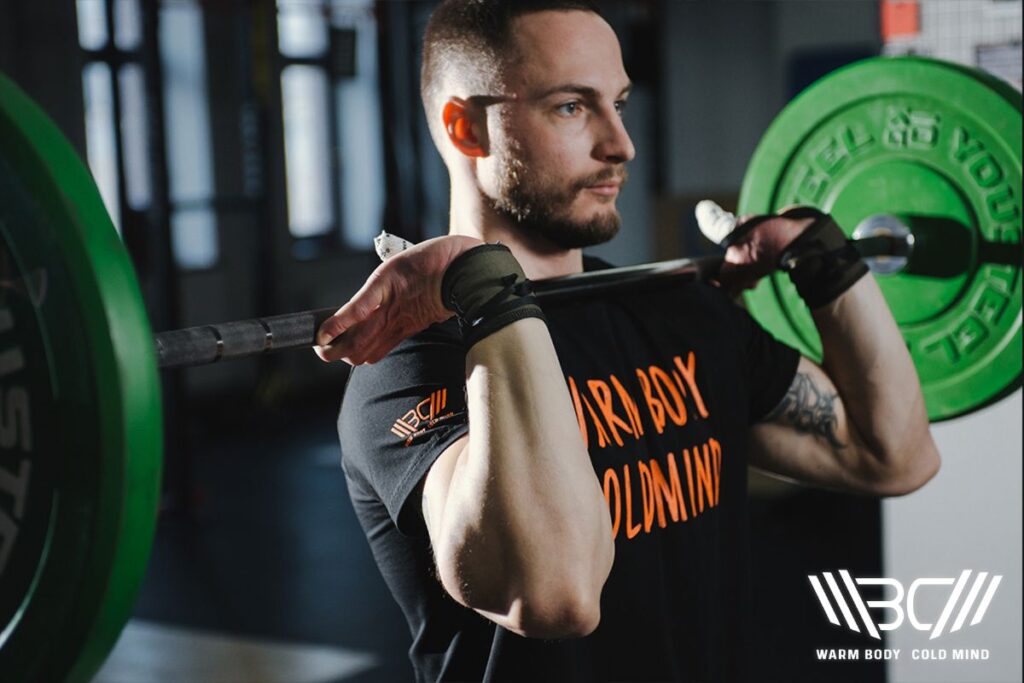
2. Wrist Sprain
Not to be confused with a strain (more on this in a second) — by definition, a sprain occurs when a ligament(s) is stretched beyond its natural elasticity or torn partially or completely.
A common cause of wrist sprains during weightlifting is bending the wrist too far back. For example, handling too much weight during bench press, overhead press, or similar exercises that require controlling the weight up and down with your hands.
Common symptoms of a sprain include low-to-mild but continuous pain (especially from applied pressure), soreness, and swelling.
Ligaments are connective tissue that bridges the gaps between two bones. They are primarily made of collagen fibers — collagen being the most common protein in the human body. The four major ligaments of the wrist include the palmar and dorsal radiocarpal ligaments and the ulnar and radial collateral ligaments.
Although we don’t endorse self-diagnosing unless you have a background in medicine/physical therapy, as far as common exercise injuries go, stretched ligaments are relatively easy to self-remedy once identified.

Cotton Weightlifting Wrist Wraps
Discover unparalleled wrist support with Warm Body Cold Mind cotton wrist wraps.
3. Wrist Strain
Strains occur when a muscle or tendon is stretched beyond its limits, resulting in tearing. They are particularly common among beginners who may not yet have a full understanding of their physical limits.
Notably, many people may not realize they’ve strained a muscle until their body cools down and the persistent ache sets in. This pain can be quite intense, especially when the affected muscle is activated, and it may persist for several days as the muscle works to repair itself.
Wrists and hands have a complex set of muscles, bones and tendons. Tendons can get strained from excessive exercise and injuries to them can be quite serious and cause long-term issues (more on this later in the section about medical conditions).
Common symptoms of strains include swelling and bruising in the affected area. In weightlifting, strains often stem from overexertion — such as training with too heavy weights or attempting too many sets and reps. Additionally, working on a cold body, i.e. not warming up properly is another frequent cause of strains.
Muscle strains are a common reason why our wrists hurt when lifting, as many people injure themselves when attempting to push for new personal records. Some athletes even view strains as a sort of unwelcome achievement. In terms of treatment, strains can be managed in much the same way as sprains.
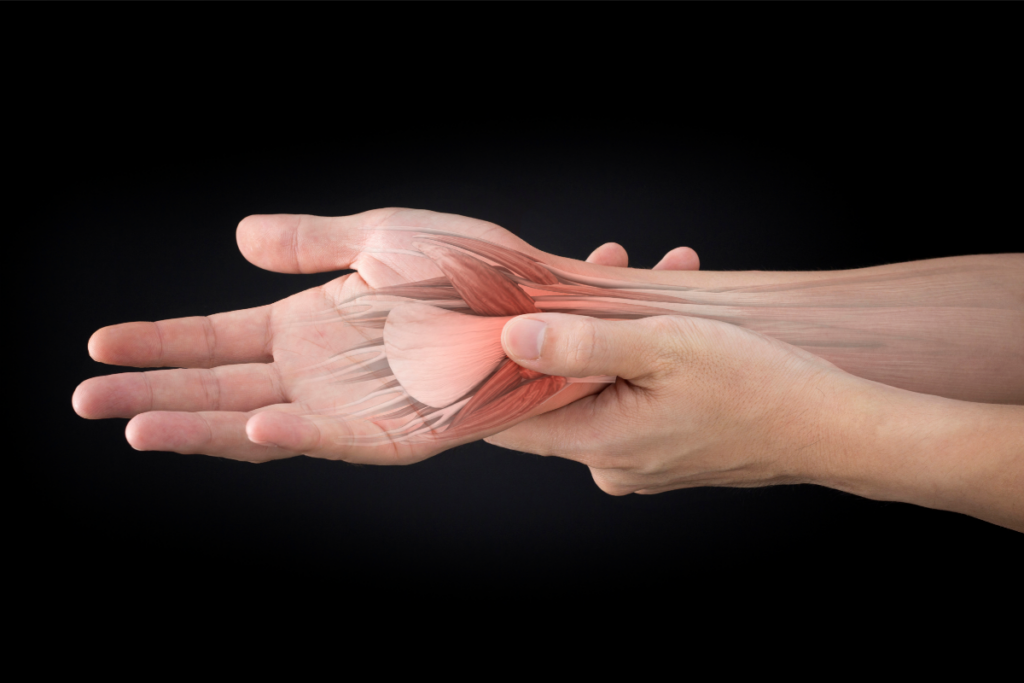
Recommended treatment for mild strains and sprains includes resting your hand for a period of 48-72 hours, keeping the joint in a neutral position, holding it on an elevated surface, as well as protein-rich nutrition and maybe even extra Omega-3. Compression is a good idea to reduce the swelling if there is some.
With small incidents without trauma or damaged tissues, but when pain is present, we recommend to stick to D2R2 protocol:
- Desensitize the area – for example working with tissues above and below, flossing, soft tissue work etc (pain can disrupt healing process)
- Decongest – for example use compression to reduce swelling, TENS device
- Reperfusion – bring back the proper blood flow by for example introducing some pain free movements in the joint, BFR exercise
- Restore – working to get high expression of the movement, restoring what joint supposed to do
We don’t usually recommend using ICE! This is because in many cases icing can slow down the healing process by for example reducing the blood flow in the area, and reducing (too much) the inflammation which is actually required to start the healing process. Like always the dose makes the poison. Too much inflammation is bad but too little is not good for the healing process as well – so the context matters.
That said, injuries not incidents – partially or fully torn ligaments require more serious attention and more often than not, medical intervention, which is why proper diagnostics are important.
4. Wrist Fracture
What most people call a broken bone is medically defined as a bone fracture. Fractures most commonly occur from trauma caused by a sudden forceful impact on the bone. For example, falling on your hands or catching a heavy object traveling with enough velocity can cause a wrist fracture.
Bone fractures feel like a quick, sharp, and comparatively intense pain that occurs instantly. Applying pressure to the fractured bone can also be excruciating, so it’s easy to self-diagnose, so to speak, from the sensation alone.
When people think of bones, what usually comes to mind is the large piece of white tissue spanning through our arm or leg, for example. However, the bone structure of our wrists is surprisingly complex.
In total, the wrist contains eight small bones collectively known as carpal bones (from the Greek word karpós, meaning wrist) which connect the heads of the two forearm bones — the Radius and the Ulna — with the finger bones.
According to research, the most common upper-body extremity fracture occurs in the Distal radius, the portion of the Radius bone closest to the wrist.
Wrist fractures are a serious injury that requires medical attention. That is to say, unless you’re a doctor or physiotherapist who can self-diagnose and assign treatment, there are no home remedies for it.
Fractures are also not something you can work around while they heal, even if you can work through the pain. Unfortunately, this sometimes means not exercising that hand until you’re done with therapy — which usually takes between a few weeks to a few months, depending on the severity.
5. Medical Conditions
More and more people are experiencing hand pain from lifting weights not because they’re injured, but rather because they have an undiagnosed medical condition that potentially got exposed due to weight-bearing.
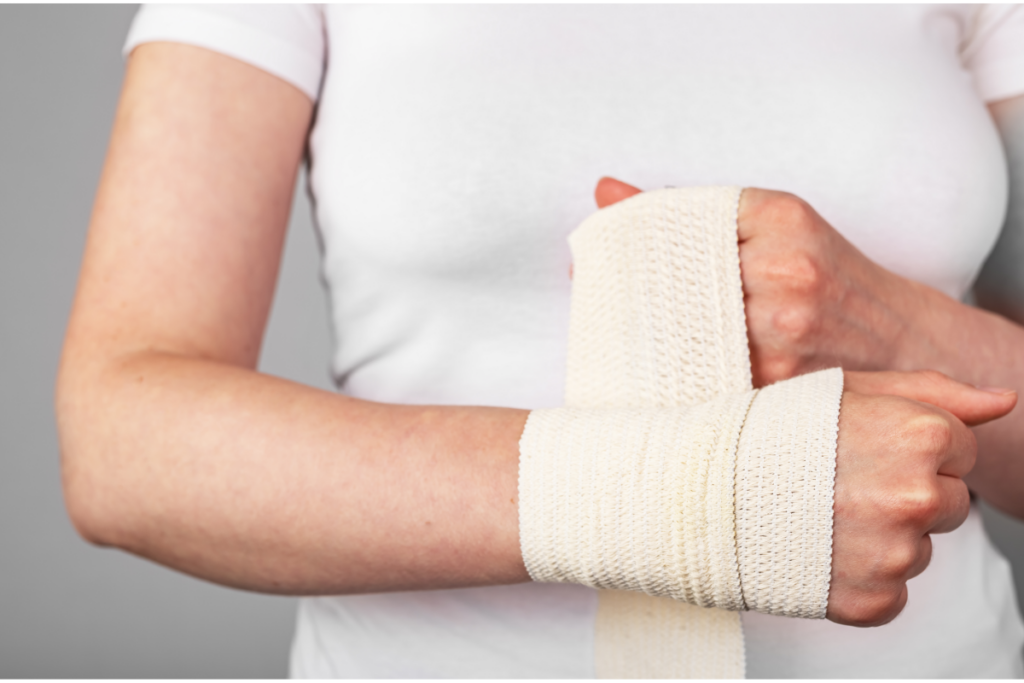
Here are some common medical conditions that might affect your wrists that you should be aware of:
1. Tenosynovitis:
Tenosynovitis is described as the inflammation of the protective sheath surrounding tendons, which can cause pain and limited joint movement. The condition typically occurs as a result of injury, infections, autoimmune diseases, and overuse.
Wrist Tenosynovitis specifically has become increasingly prevalent due to overuse of the joint in daily activities, such as typing on keyboards, swiping on phones, and excessive exercise, to name a few.
Luckily, it’s treatable with prompt diagnosis and proper treatment, with recovery usually taking no more than two months with proper rest. However, ignoring it may cause severe damage to the wrist down the line, which might require a more complicated healing process or surgery.
2. Arthritis:
Arthritis is a chronic condition characterized by inflammation of the joints, leading to pain, stiffness, and reduced mobility. Osteoarthritis (OA) is the most common form of Arthritis.
Other than direct trauma causing it, the condition most commonly occurs with age and, unfortunately, the effects are non-reversible. However, if caught early, it can be significantly slowed down, and weight-bearing exercise is commonly prescribed as part of therapy.
3. Carpal Tunnel Syndrome:
Carpal Tunnel Syndrome (CTS) is a neurological disorder resulting from pressure on the median nerve at the wrist, leading to symptoms like numbness, weakness, and pain in the hand and wrist. It occurs due to the narrowing of the carpal tunnel, a passageway for tendons, and the median nerve.
While CTS can be managed with home care if caught early, severe cases may require surgery. Factors contributing to CTS include trauma, certain medical conditions, and repetitive hand motions — making it a common occurrence in demographics such as instrument players, avid gamers, and manual laborers, to name a few.
Subscribe!
The latest reviews of must-have home gym training equipment, apparel, and supplements that will enhance your performance and bring you new results.
When To See A Doctor For Wrist Pain?
Firstly, you should consider a checkup if the pain you experience is severe or persistent, especially well after a workout. Visible signs such as swelling, bruising, or difficulty moving your wrist are also a sign of more serious issues. Additionally, if you have a history of wrist injuries, it’s advisable to consult a doctor.
Finally, if wrist pain interferes with daily activities or if you’re uncertain about its true cause, seek medical attention for diagnosis and treatment to prevent more serious issues down the line.
How to Avoid Weightlifting Wrist Pain?
1. Warm Up Properly
Attempting to work out on a cold body is one of the leading causes of exercise injury, particularly strains and sprains. Warming up elevates your heart rate, increases your blood flow, and raises your body temperature. As a result the body is mobilized, and the brain mentally prepares for a physical challenge.
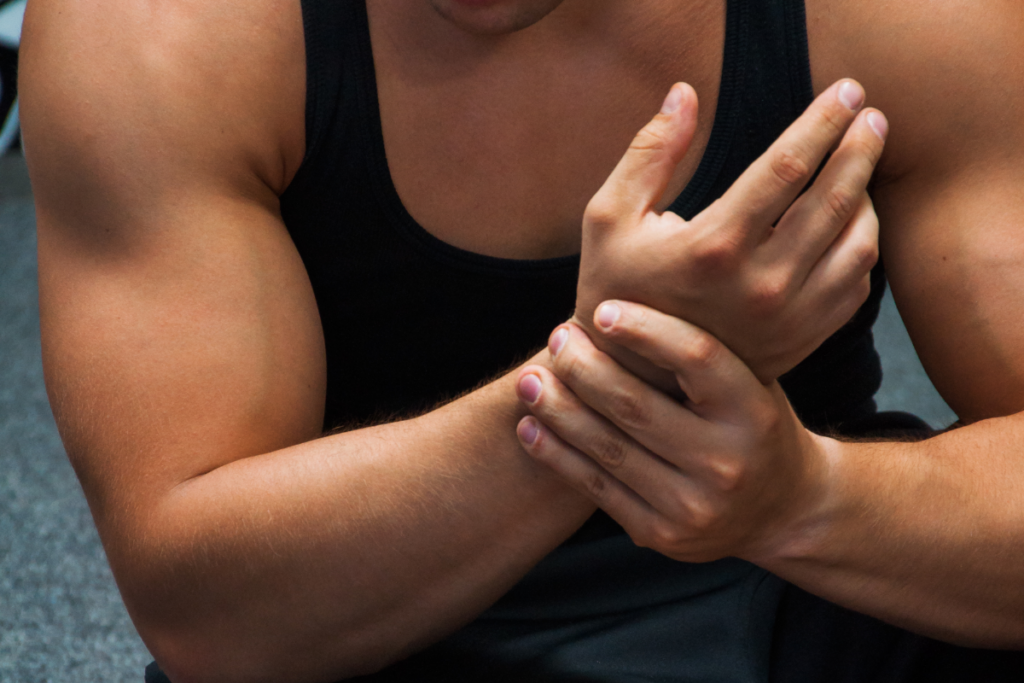
2. Avoid Overtraining
Avoiding a wrist injury from lifting altogether is better than risking treating it later. We only have one body so we must treat it correctly. Putting realistic expectations on it is important for a healthy workout.
That means not attempting excessive weights and doing an overwhelming amount of sets and reps. Consider periodizing your training and calculating proper volume for your fitness level to avoid overtraining.
3. Use Wrist Wraps
Wrist wraps are a smart choice for anyone lifting heavy weights or dealing with wrist pain from various other causes. By encircling the wrist and looping over the thumb, they create structural support for the joint and minimize unwanted movement. This especially comes in hand with lifting exercises where joint instability is common, such as hefty bench presses.
Wrist wraps can provide special aid if the reason for your pain is a medical condition that you have no choice but to work around. But they’re not just good for weightlifters. They’re equally effective for stabilizing wrists in cross-training, gymnastics, racket sports, and even in everyday tasks like gardening, prolonged keyboard typing, or playing musical instruments.
We Recommend The Warm Body Cold Mind Wrist Wraps
Why trust us over other brands? These wraps were expertly designed by former Olympic athlete, Oleksiy Torokhtiy, using first-hand competitive weightlifting experience at the highest level.
Made from 100% cotton, the natural material wraps comfortably around your wrist without irritating the skin, with extra stitching to prevent tearing even under intense exercise. Measuring 3 inches in width and 30 inches in length, they provide a comfortable fit for nearly anyone.
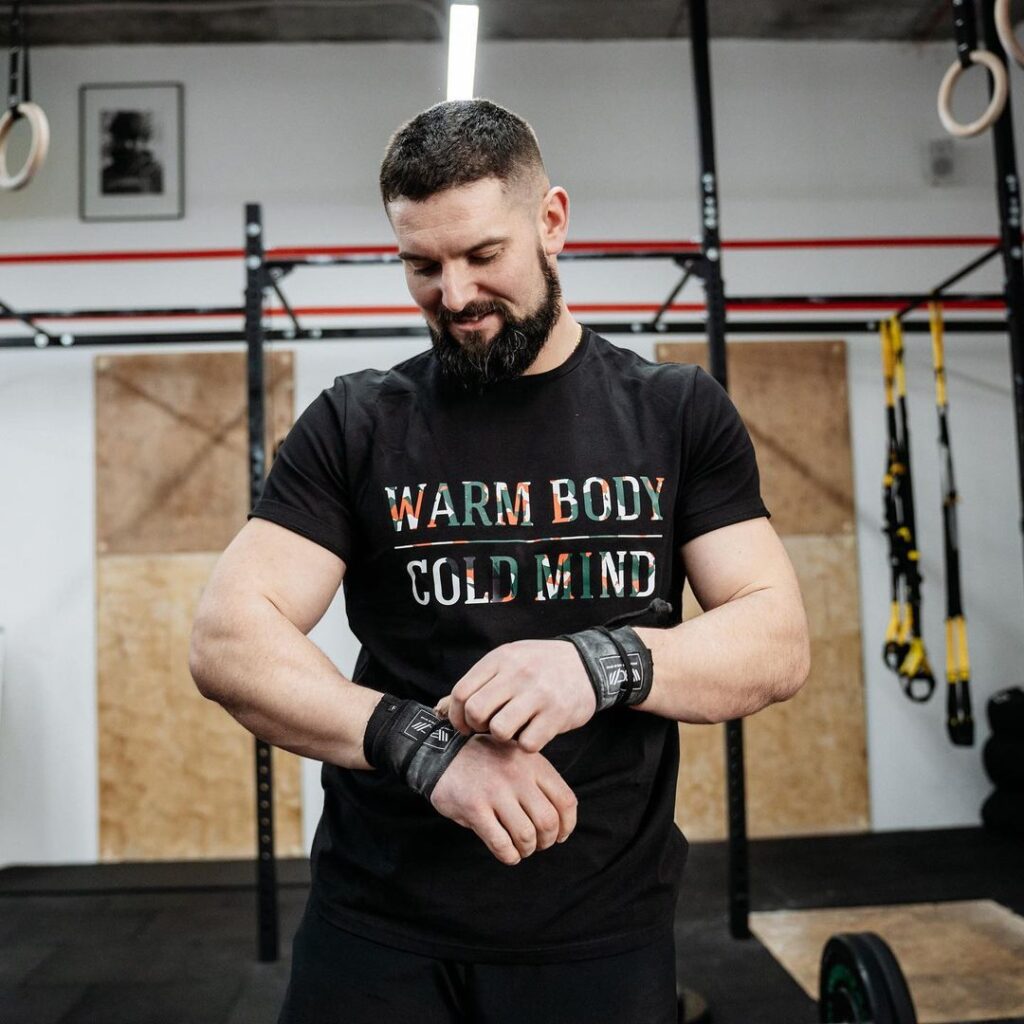
The design is unisex and currently available in six color choices. Each purchase comes in pairs, giving it outstanding value for money.
What Can Happen If You Ignore Wrist Pain While Lifting Weights?
Our brains have evolved to feel pain as a way to signal that something is wrong. The more intense the pain, the more serious it is and the quicker it demands our attention. As you’ve seen, feeling wrist pain when lifting can be a mild inconvenience or a symptom of bigger problems.
That said, even if it’s nothing serious at the moment, ignoring it now may very well come back to cause problems down the line. If you did sustain a minor injury, continuing to work out through it might aggravate it further and delay healing. One injury can also easily lead to another, as your body puts more stress on other parts to try and compensate.
Pain is usually a request for a change not a request for a break. It’s difficult to change anything by doing nothing because later when you’ll restart and go back to what you were doing, problem will probably show up at some point as well.
Talk to your coach, physio or doctor to build a systematic plan to address the root of the problem. Not to mention the need for medical intervention such as physical therapy and/or surgery (which can be costly and time-consuming), as well as developing chronic conditions, some of which stay with you for life.
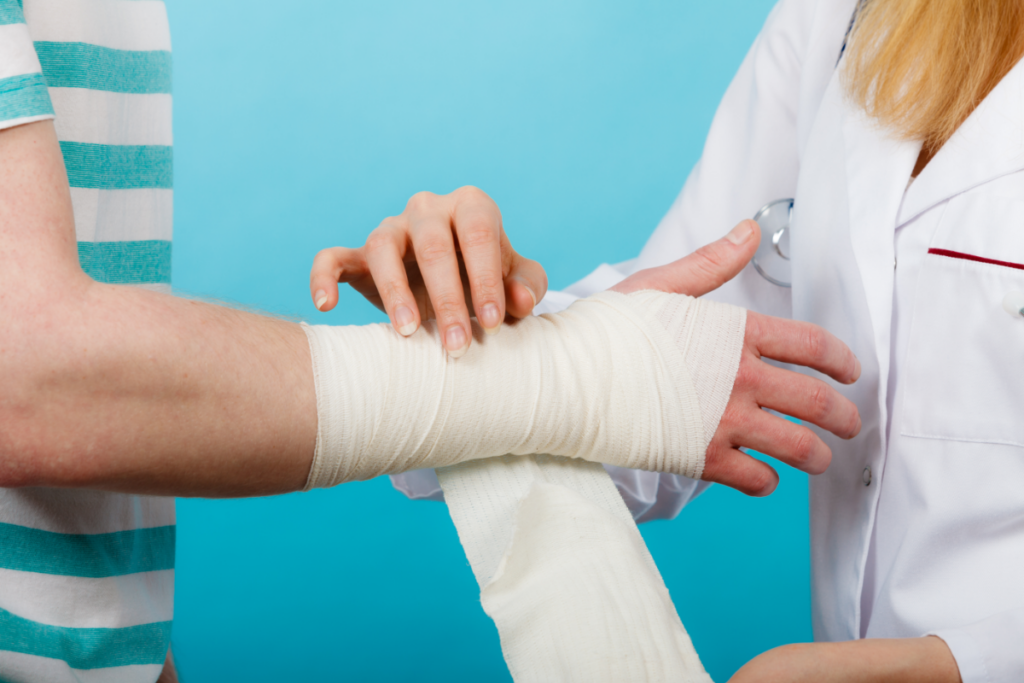
FAQ
How Long Does It Take for a Strained Wrist During Lifting to Heal?
If you strained your wrist during exercise and didn’t push it any further, a few day’s rest is all it will take to heal up. Use D2R2 model from the article to the swelling, numb the pain, and improve blood circulation.
Keep the wrist in a neutral position, get small pain free movements, eat protein-rich food, drink lots of water, and the strain will subside within 48-72 hours. If it doesn’t, a physical checkup is warranted.
Is Wrist Pain Normal After Lifting?
Mild discomfort or sore wrists from lifting is a normal occurrence, particularly if you’re pushing your maximum weight capacity. However, if the pain doesn’t subside after a few hours of rest and some light stretches, consider the fact you might have an injury.
How Do I Know if My Wrist Pain After Lifting Is Serious?
Pain is a natural response to something being wrong with our bodies and should be taken note of. Mild wrist pain from gym day is nothing unusual and should subside with adequate rest and proper nutrition.
However, if the feeling is intense, the pain persists well after a workout, and it impacts your daily activities, it’s a good idea to check in with a doctor. Also, pay attention to physical manifestations such as bruising or swelling.
Conclusion
To summarize, feeling wrist pain from lifting heavy weights is normal in small doses. Assuming that the pain goes away once the pressure from the weight stops and we rest our hands, there’s not much cause for concern – make sure that in your plan you are including exercises that are strengthening your grip.
That said, noticing wrist pain when working out is something to take note of and track in following rest days and subsequent workouts.
If the sensation is intense, and it doesn’t stop well after a workout, it could be related to injury. Furthermore, if it’s not going away and you start noticing it more frequently, it might be a sign of underlying medical conditions that should be addressed. Also, using wrist straps is a proven way to reduce stress on your wrists and protect it from damage.
Did you experience wrist pain when lifting weights? If so, did you get a checkup and how did you remedy it? Feel free to leave a comment and remember to follow us on social media for more valuable fitness content.
References:
- “Sprains”, mayoclinic.org https://www.mayoclinic.org/diseases-conditions/sprains/symptoms-causes/syc-20377938 (accessed Sep. 28, 2023)
- “Wrist Sprain”, physio-pedia.com https://www.physio-pedia.com/Wrist_Sprain (accessed Sep. 28, 2023)
- “What are ligaments?”, InformedHealth.org [Internet]. Cologne, Germany: Institute for Quality and Efficiency in Health Care (IQWiG); 2006 https://www.ncbi.nlm.nih.gov/ books/NBK525790/. (accessed Sep. 28, 2023)
- “Collagen”, clevelandclinic.org https://my.clevelandclinic.org /health/articles/23089-collagen (accessed Sep. 28, 2023)
- “The anatomy of the wrist joint.”, Lewis OJ, Hamshere RJ, Bucknill TM., Journal of Anatomy 1970 May;106(Pt 3):539-52. https://www.ncbi.nlm.nih.gov/pmc /articles/PMC1233428/ (accessed Sep. 28, 2023)
- “Wrist Sprain”, Medically Reviewed by Ross Brakeville, DPT, webmd.com https://www.webmd.com/fitness-exercise/wrist-sprain. (accessed Sep. 28, 2023)
- “Strains”, medlineplus.gov (National Library of Medicine) https://medlineplus.gov/ency /article/000042.htm. (accessed Sep. 28, 2023)
- “Anatomy of the Hand and Wrist”, clevelandclinic.org https://my.clevelandclinic.org /health/body/25060-anatomy-of-the-hand-and-wrist (accessed Sep. 28, 2023)
- “Bone Fractures”, clevelandclinic.org https://my.clevelandclinic.org/health /diseases/15241-bone-fractures (accessed Sep. 28, 2023)
- “Anatomy, Shoulder and Upper Limb, Hand Carpal Bones”, Alex Tang; Matthew Varacall, StatPearls Publishing [Internet] https://www.ncbi.nlm.nih.gov/ books/NBK535382/. (accessed Sep. 28, 2023)
- “Radius (Bone)”, clevelandclinic.org https://my.clevelandclinic.org/ health/body/24528-radius (accessed Sep. 28, 2023)
- “Anatomy, Shoulder and Upper Limb, Forearm Ulna”, Mirza A. Baig; Doug W. Byerly., StatPearls Publishing [Internet] https://www.ncbi.nlm.nih.gov/ books/NBK547749/. (accessed Sep. 28, 2023)
- “The Epidemiology of Upper Extremity Fractures in the United States, 2009”, Karl JW, Olson PR, Rosenwasser MP., Journal of Orthopaedic Trauma 2015 Aug;29(8):e242-4. https://pubmed.ncbi.nlm.nih.gov /25714441/ (accessed Sep. 28, 2023)
- “Tenosynovitis”, clevelandclinic.org https://my.clevelandclinic.org/health /diseases/23448-tenosynovitis (accessed Sep. 28, 2023)
- “Osteoarthritis (OA)”, cdc.gov https://www.cdc.gov/arthritis /basics/osteoarthritis.htm. (accessed Sep. 28, 2023)
- “Carpal Tunnel Syndrome”, .National Institute of Neurological Disorders and Stroke (ninds.nih.gov) https://www.ninds.nih.gov/health-information/disorders/carpal-tunnel-syndrome. (accessed Sep. 28, 2023)
- “Carpal tunnel: Normal anatomy, anatomical variants and ultrasound technique”, Presazzi A, Bortolotto C, Zacchino M, Madonia L, Draghi F., Journal of Ultrasound 2011 Mar;14(1):40-6. https://www.ncbi.nlm.nih.gov/pmc /articles/PMC3558235/. (accessed Sep. 28, 2023)
Author: Ihor Shymechko
Coach, PRO Olympic Weightlifter
Ihor Shymechko is a renowned Ukrainian weightlifter. He has represented his country in several Olympic Games, notably in 2008, 2012, and 2016. His impressive career includes winning the European championship in 2009 and earning a silver medal in 2011 in the +105 kg division. Shymechko also earned a Ph.D. from Lviv State University of Physical Culture.
Reviewed by: Oleksiy Torokhtiy
Olympic Weightlifting Champion
Oleksiy Torokhtiy is an Olympic gold medalist in weightlifting and a prominent coach. Born in Ukraine, he has degrees in Physical Education and Engineering and is currently pursuing a Ph.D. in Sports Science. He’s known for his online training programs and masterclasses that have helped many athletes around the world. He is also a successful social media influencer and the founder of the international sportswear brand “Warm Body Cold Mind”.

